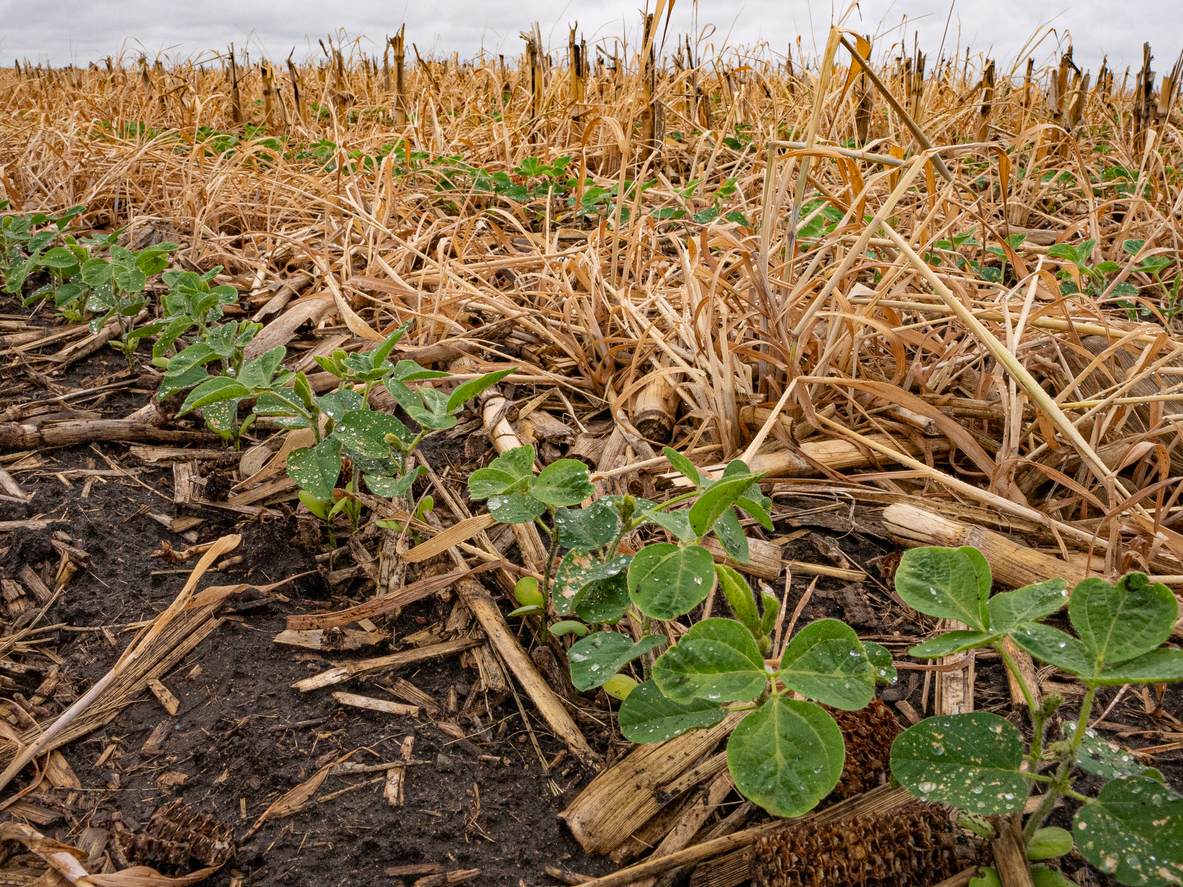Regenerative agriculture is seen by many (though not everyone) as an important player in the fight to reduce Scope 3 emissions, which account for nearly 90% of food and beverage companies’ carbon footprint.
So far, however, both regen ag and Scope 3 strategies remain elusive for many farmers and food companies. Agrifood corporates don’t have direct control over Scope 3 emissions, which makes them difficult to track and data limited; growers face financial and operational risks when switching to practices like cover cropping or no-till farming. Meanwhile, standards like the Science Based Targets initiative (SBTi) and the Greenhouse Gas Protocol (GHGP) are still evolving.
Daniel Ryan, CEO of CIBO Technologies, puts the problem in simple terms: “It’s hard work and it’s expensive.”
Getting positive ROI for implementing practices, whether through higher prices on crops or additional income via carbon credits, is one of the biggest challenges, according to a report from McKinsey.
‘An end-to-end’ strategy for Scope 3
Since 2015, CIBO Technologies has tried to simplify the regenerative agriculture transition for growers and agrifood businesses through its software platform. Using, data and analytics, CIBO helps farmers find regen ag incentives, gauge their eligibility for programs, monitor and verify progress, and sell carbon credits.
Corporates can use the platform and its products to find and enroll growers, and manage and create incentive programs aimed at decarbonizing the supply chain — where the bulk of Scope 3 emissions originate.
Directly addressing that latter point, CIBO just unveiled a new Scope 3 offering designed to help agricultural enterprises identify, measure, reduce and report on carbon emissions throughout their supply chains as well as connect growers with financial incentives like the USDA Environmental Quality Incentives Program (EQIP).
“It’s really an end-to-end solution,” says Ryan. “We had big pieces of it before but the front-end, planning and scoping and then the back-end reporting is what really completes the solution.”
“The food companies really care about emissions reduction and system resilience, whereas when you get to the farm side, they care about resilience and profitability,” he adds.
To that end, the new offering includes everything from identifying regions in which a company needs to source acres to designing emissions-reduction strategies and providing outcomes reporting that aligns with voluntary standards like the GHGP and the SBTi. The Scope 3 program also develops programs for farmers designed to meet reduction targets and strategies.
“We’ve made a better solution for developing carbon programs for corporate sponsors,” says Ryan of the new offering. “They have to set their baseline inventory of emissions for the SBTi or [SBTi] FLAG and all these different standards. In most cases, they don’t source directly from farms; they have to set the inventory for a big supply shed and it could be 10 million, 20 million, 50 million acres they have to set a baseline inventory for.”
“The new platform capability allows them to set that inventory and then do the supply chain scenarios: If I make these reductions, will it help me achieve my targets by 2030, 2050, etc.? Then we turn those [goals] into the programs they want to deploy and at the end of that do the reporting that’s required for these corporations.”

‘Finding a roadmap with money’ for farmers
To source the acres and get farmers onboard, CIBO leverages its network of grower-facing advisors such as agronomists and retailers.
“They go find the farmers to deploy these programs,” says Ryan, who adds that CIBO is more concerned with making the software these parties can use to help their farmers, rather than trying to sell directly to farmers.
“You need agronomic support. What’s the right way to implement this cover crop? What’s the right way to do the nitrogen reduction to ensure a good outcome? That’s where the agronomists come in.”
He says one of the requirements for farmers is a level of incentive. “These new practices actually cost money and they might add risk to that operation in the near term. You really need sufficient incentive to get farmers over that hurdle.
“Our goal is to find a roadmap with money for that farmer to incentivize them for a number of years. It could be a combination of CPG [programs], it could be a combination of CPGs plus USDA programs. We try to find those incentives and deploy them through our grower network.”
He adds: “The goal is, in the long term, once these practices have been deployed for a few years, that they become self sustaining because the farm becomes more profitable, because the productivity and resilience on the farm increases and, when you get past a certain point in time, that farm should be more profitable.”

Looking beyond Scope 3
Ryan says the industry is seeing “some pretty big commitments now” around Scope 3 targets from the likes of Mars, Nestlé and other major agrifood businesses.
“We’re seeing a lot of people doing meaningful-sized pilots. There’s a lot of activity going on out there that probably isn’t reported very well, either. But it’s nowhere near the scale of where the commitments are.”
Once companies reach that scale, they’ll face a new challenge, he adds. “The challenge is going to be finding enough acres to convert.”
“Again, you can’t just convert 10 million acres overnight. This is a process that takes time, and farmers have been doing things a certain way for a long time. A lot of land is rented in this country, [which] can be a challenge When the money starts flowing [around regen ag], we’re gonna have a bigger problem, which will be finding enough acres to deploy quickly. The people that are smart are beginning that now.”




